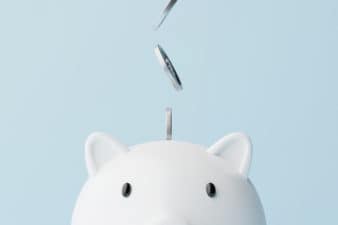How safe is your retirement from a real estate bust?
From his popular blog GreaterFool.ca, best-selling author and former Member of Parliament Garth Turner warns that the country’s bubbly housing market could wipe out retirement dreams for millions of Canadians. Even more alarming, he argues that too much exposure to real estate is just one of many mistakes that could trip up savers.
In part three of my conversation with Garth, we discuss the most common errors Canadians make when it comes to investing. The following is a transcript of our conversation. It has been lightly edited for clarity.
Robert Baillieul: You’ve emphasized that balance is important when it comes to investing. What does the Garth Turner portfolio look like?
Garth Turner: I tried on my blog to come up with a formula to give people some guidance. I came up with this Rule of 90. Basically, you take 90 and minus your age. That gives you the approximate percentage of your net worth that you should have in residential real estate.
Obviously, when you’re younger, it accepts that you’re going to have a larger exposure. But as you get older, the amount of equity or net worth you have in residential real estate should decline.
There has to be some kind of balance. When you’re 20 years old, it’s okay to have 70% or 75% exposure to real estate. But for somebody in their 60s, I would be more comfortable with a number somewhere around 30%.
The important thing, you cannot go into retirement as many people are now with a mortgage and 60%, 70%, 80% of your net worth in one asset. That’s dangerous. Don’t build up too much non-productive equity in one asset—particularly one asset that has an inflated value.
I’m a believer in having a diversified portfolio. I love having a 60/40 balance between growth and fixed income. That has performed well and I will continue to do that.
I’m a big advocate of exchange traded funds, or ETFs. They give tons of diversification and keep volatility under control. That’s pretty much what I have been preaching.
Most people have an extreme position. They’re all-in on real estate or they’re all-in on financial assets. Both of those are probably unwise.
Baillieul: In that sense, bonds are underrated. People are always knocking fixed-income securities like the iShares DEX Universe Bond Index Fund (TSX:XBB).
I understand they probably won’t provide the best returns going forward. But in my experience, keeping some percentage of my portfolio in bonds has given me the courage to hold on during market meltdowns.
Turner: A lot of investors think every asset in their portfolio needs to be performing. That’s an amateur mistake. You could have non-performing assets in the portfolio that are actually fulfilling a good role.
Bonds could be one of them. Interest rates have gone down over the last couple of months and bonds have done well. That’s going to reverse. Bonds yields will be going up. Bond prices will be coming down. When that happens, people will question why they own bonds. However, they won’t question them on the day when the Dow Jones Industrial Average goes down by 400 or 600 points.
Bonds and fixed income in general help to calm a portfolio. They calm the investor. That’s key.
It’s like having a race car with 16 cylinders in the engine. Some of them are going up. Some of them are going down. The key is you keep moving ahead.
Trying to get a portfolio with all performing assets means they’ll end up doing a lot more trading and have a lot more volatility. You have to let a balanced portfolio do its job.
Baillieul: I saw a headline the other day that said, “Diversification is always having to say you’re sorry.” I thought that summed it up pretty well.
Turner: Yeah, I agree.
Baillieul: We had some rumours this week that Federal Finance Minister Joe Oliver will boost the contribution limits on tax-free saving accounts, or TFSAs. You’ve been speculating that this will happen for a while now.
Turner: It’s sexy politics. It’s consistent with the [Prime Minister Stephen] Harper Conservatives. It’s the same reason why they dropped the Goods and Service Tax by 1%. That was sexy politics, but bad economics. They’ll do the same with the TFSA.
It doesn’t cost the government any immediate money. It’s not a tax expense. It will be in the long run.
However, that’s for other governments to worry about. Today, it’s a line item that they can hang in the window to divert attention away from the weakness in the general economy. Is it good social policy? Of course not! It’s horrible social policy. It just makes rich people richer.
I’m not complaining. I love it. My wife and I will be able to put away $22,000 into our TFSA every year. Our capital gains tax rate will go to zero. What’s not to love?
But the fact remains, 80% of the money in TFSAs is sitting in interest bearing accounts. That’s 11 million accounts. It’s insane. For all of those people, this isn’t going to do any good.
It’s like income splitting among married couples that the government has also brought in. Again, it’s sexy politics that appeals to the base, but not good social policy.
 Spring Sale
Spring Sale







